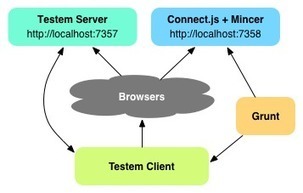Ember.js is a JavaScript MVC framework for creating ambitious web applications and is one that, along with the Ember Data library's models, SoftLayer uses for its projects. The "M" in MVC stands for model which is the most important layer in an application, for if the data models are not correctly architected anything built on top of them will inherit their deficiencies. While this post is not going to discuss how to architect your data models in Ember.js it is going to propose a way in which you can Unit Test your model's definitions so that you keep any incongruent changes from being introduced into them.
When we write our Unit Tests we want them to be able to completely test the definition of our data models. This includes properties, their type, any relationships they have with other data models, the generated result of any computed properties and the properties computed properties are observing.




 Your new post is loading...
Your new post is loading...












